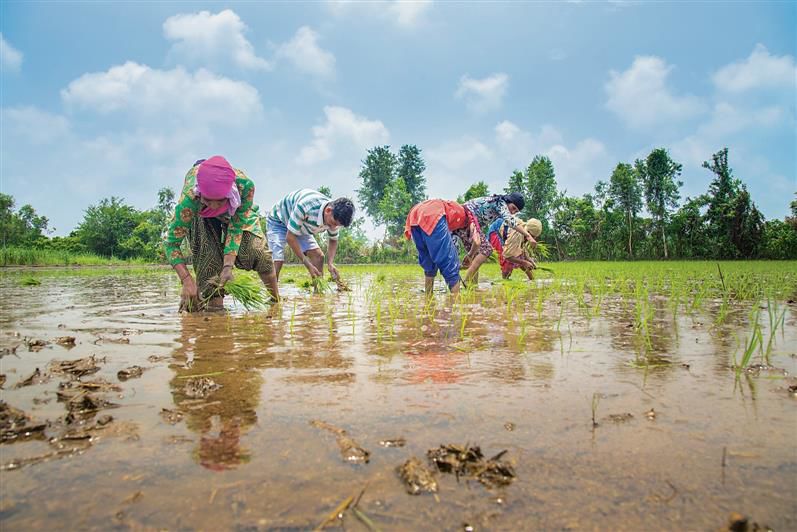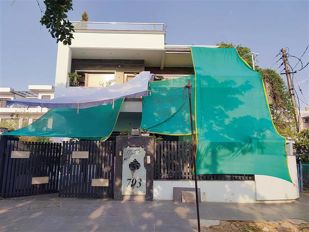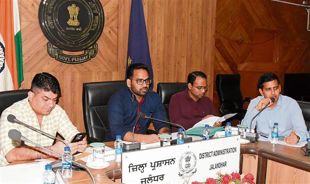
Satbir Singh Kadian
HARYANA is grappling with a water crisis. In 2021, the state’s total water demand was estimated at 34.96 billion cubic metres (BCM), while the total availability from all sources was 20.93 BCM. The shortfall was estimated at 14 BCM. Agriculture consumes around 87 per cent of this water, with paddy being the most water-intensive crop. Over 55 per cent of the water in the agricultural sector comes from groundwater in the state.
The situation has become so dire that groundwater depletion reached 135.4 per cent between 2020 and 2022. Data collected by the Haryana Water Resources Authority shows that the groundwater level has been declining in the state at the rate of 0.33-1 metre per year.
Despite having only 4 per cent of the world’s freshwater resources, India accounts for 16 per cent of the global population. The country has the dubious distinction of being the world’s largest groundwater extractor. This heavy extraction has led to the overexploitation of numerous aquifers, surpassing even the groundwater extraction rates of China and the US. In Haryana’s case, the groundwater extraction rate is around 137 per cent. Falling groundwater levels can lead to increased concentrations of heavy metals in the water. This contaminated water can then contribute to the spread of serious diseases like cancer as long-term exposure to these metals poses significant health risks.

A study in Kaithal district shows that the area under paddy cultivation has been on the rise. The area in 2020 was 1,35,264 hectares; it increased by 20 per cent to 1,63,405 hectares by 2023. The entire state is also witnessing a surge in area under paddy cultivation.
Haryana is a major agricultural state. Farmers here prioritise paddy cultivation because it is a low-cost crop that gives high yields and financial gains. In addition, due to the MSP on paddy, more farmers are attracted towards paddy cultivation as compared to non-MSP crops. Under the traditional methods that have been in vogue, farmers in Haryana have been cultivating paddy using the flood irrigation method for irrigation. It involves continuously flooding the fields with water to maintain a shallow layer throughout the growing season. This method leads to overexploitation of groundwater and a very rapid decline in its levels.
Paddy requires a significant amount of water – 3,000 to 5,000 litres per kg. Exporting rice essentially means that we are exporting the nation’s precious groundwater. Rice cultivation not only depletes soil nutrients but also leads to waterlogging. Therefore, there is an urgent need to shift from paddy to other crops.
Haryana has a total area of 44.21 lakh hectares, of which 38.09 lakh hectares (86 per cent) is cultivable — of this, the net sown area is around 36 per cent and the gross cropped area is 64 per cent. Paddy is cultivated on 15.3 lakh hectares (40 per cent). Haryana’s cropping intensity is 182 per cent, while the national average is 135 per cent. The total irrigated area is 84 per cent. Haryana has 46 per cent marginal and 19 per cent small farmers. The latter prefer to grow rice because they get a guaranteed price for it, which helps them with their daily expenses.
Efforts are underway to promote less water-intensive crops that are also of interest to farmers. To support this initiative, the state government is promoting crop diversification through the Mera Pani Meri Virasat Yojana, under which Rs 7,000 per acre is given to farmers to diversify from paddy to alternative crops such as maize, cotton, kharif oilseeds, kharif pulses, kharif onion and fodder crops, and Rs 4,000 per acre for paddy cultivation through the Direct Seeding of Rice (DSR) method, which consumes less water. According to the Direct Seeded Rice Consortium, the DSR is a crop establishment system wherein rice seeds are sown directly into the field, as opposed to the traditional method of growing seedlings in a nursery and then transplanting into flooded fields.
The rapid decline in groundwater levels over the past three decades, exacerbated by paddy cultivation, underscore a critical issue. This depletion has led to a staggering water shortage of 14 BCM, a trend that, if unchecked, threatens to compromise agricultural water resources severely. To safeguard our future, the conservation of groundwater is paramount. Transitioning from paddy to crops with lower water requirements and embracing water-efficient practices like micro-irrigation, laser land levelling and zero tillage methods are crucial steps.
The Atal Bhujal Yojana emerges as a beacon of hope in this endeavour, focusing on sustainable groundwater management through a community participation approach. This initiative empowers communities to create water budgets and develop water security plans for their gram panchayats, effectively managing the delicate balance between water demand and supply. Such an approach is pivotal for groundwater conservation, ensuring the wellbeing of future generations.
Strategic shift
Considering the available data and the efforts made by the state government, immediate attention must be directed towards the following points:
- The entire cultivation of paddy in the state must be done through the DSR, along with the micro-irrigation technique.
- Paddy cultivation should be restricted to areas where irrigation water is available through canals.
- The state government is urged to offer MSP for crops with lower water consumption, incentivising farmers to opt for them over rice.
The author is Engineer-in-Chief-cum-Project Director, Atal Bhujal Yojana, Irrigation & Water Resources Department, Haryana
Send your feedback to [email protected]
Join Whatsapp Channel of The Tribune for latest updates.



























